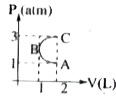The PV diagram for cyclic process is a triangle ABC see Fig. drawn in order. The co-ordinates of A, B and Care (4,1), (2,4) and (2,1). The co-ordinates are in order of P and V in which P is and volume is in litre. Calculate the work done during the process from A to B, B to C and C to A. Also calculate the work done in the complete cycle.
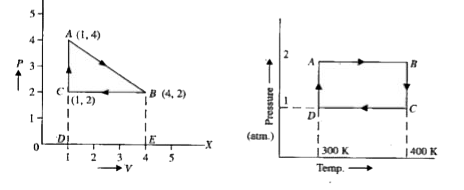
Work done == Area of triangle
Topper's Solved these Questions
- INTERNAL ENERGY Book:ICSEChapter:INTERNAL ENERGY Exercise:SELECTED PROBLEMS (FROM HEAT ENGINES)
Explore 21 Videos
- INTERNAL ENERGY Book:ICSEChapter:INTERNAL ENERGY Exercise:SELECTED PROBLEMS (FROM ISOTHERMAL AND ADIABATIC PROCESSES )
Explore 10 Videos
- GRAVITATIONBook:ICSEChapter:GRAVITATIONExercise:FROM THE HUBBLE TELESCOP
Explore 2 Videos
- MOTION IN FLUIDS Book:ICSEChapter:MOTION IN FLUIDS Exercise:SELECTED PROBLEMS (FROM POISEUILLE.S FORMULA)
Explore 19 Videos
Similar Questions
Knowledge Check
A cyclic process is shown in the figure. Work done during the cyclic process ABCDA is
 A1600 JB150 JC600 JD900 J
A1600 JB150 JC600 JD900 J
Work done in given cyclic process is
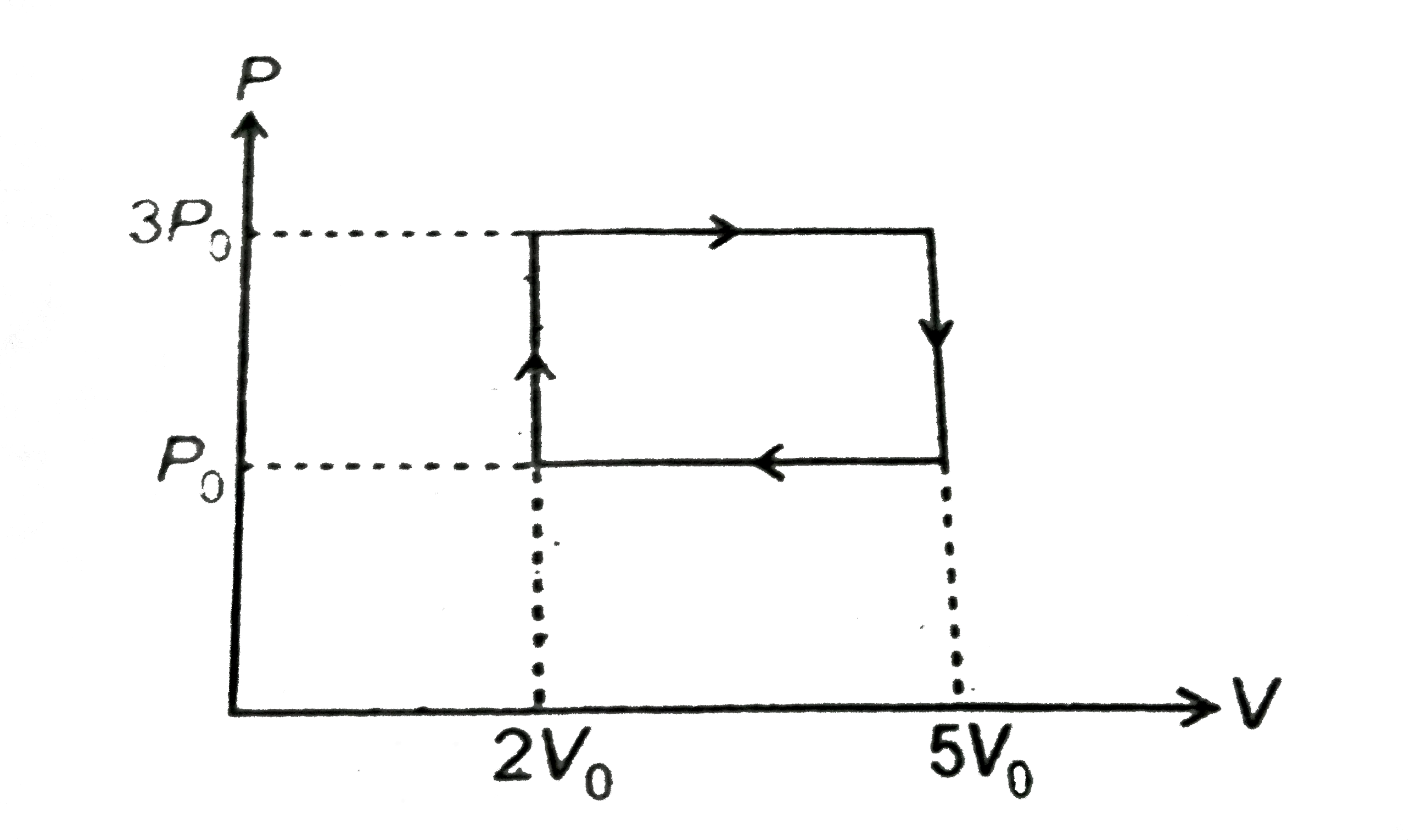
View SolutionP – V graph for a cyclic process is shown in figure . Work done is given by
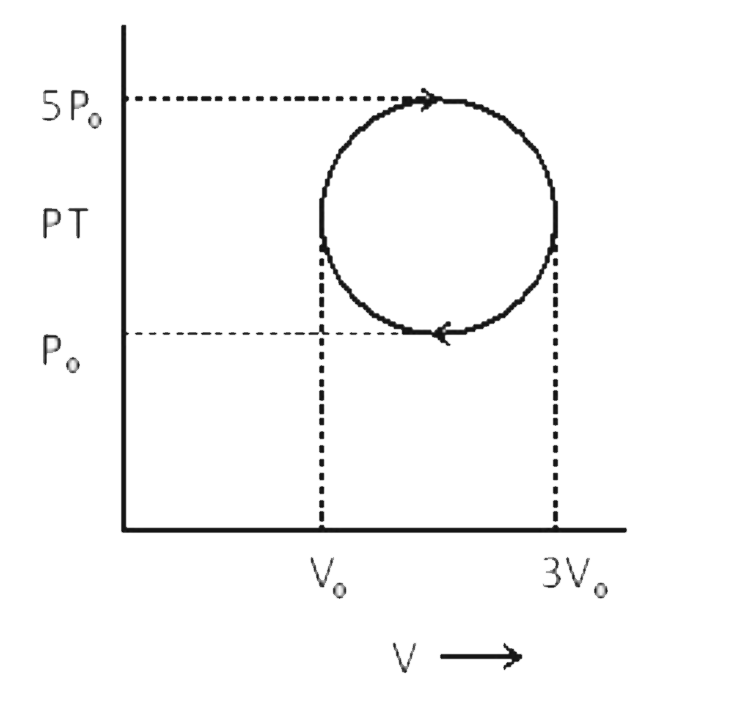
View SolutionIn the P−V diagram shown in figure ABC is a semicircle. The work done in the process ABC is
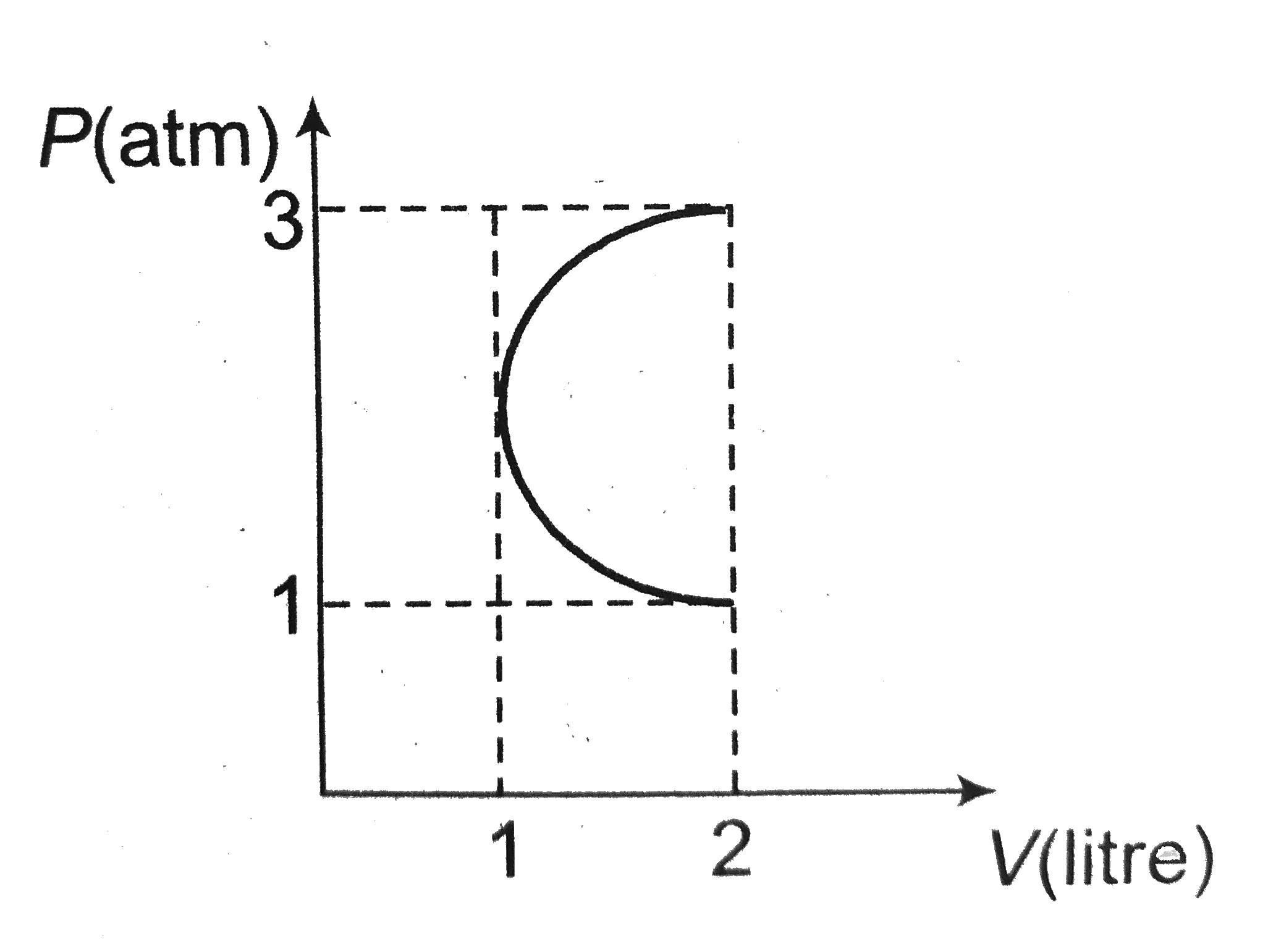
View SolutionThe co-ordinates of two vertices of ΔABC are A(-5,7,3) and B(7,-6,-1). The co-ordinates of its centroid are (1,1,1). Find the co-ordinates of vertex C.
View SolutionIn ΔABC,∠A=90∘ and the co-ordinates of points B and C are (2,−4)and(1,5). Find the equation of the circumcircle of ΔABC.
View SolutionPoints A and B have the co-ordinates (−2,4)and(−4,1) respectively. Find:
the co-ordinates of B', the image of B in y-axis.
View SolutionThe co-ordinates of three vertices of a parallelogram ABCD are A(1,0) , B(3,4) and C(1,2). The co-ordinates of fourth vertex D are :
View Solution

